In this LiPo battery charger buyer’s guide, we’ll explore how to choose the ideal charger and an appropriate power supply based on the requirement of your FPV drones, highlighting key features and considerations. Our goal is to help you select the best LiPo charger for your specific needs and budget.
If you’re new to FPV, we recommend starting with our guide on LiPo Battery Basics, which explains the essential terminology used throughout this article: https://oscarliang.com/lipo-battery-guide/
Table of Contents
Top LiPo Charger Recommendations
We’ve compiled a list of the best LiPo chargers suitable for FPV drone pilots at all skill levels.
If you’re concerned about parallel charging, consider investing in a dual-channel or even four-channel charger to avoid slow, one-at-a-time charging. However, if you’re comfortable using a parallel charging board, a single-port charger can simultaneously charge multiple batteries. Before attempting parallel charging, ensure you familiarize yourself with the proper safety procedures: https://oscarliang.com/parallel-charging-multiple-lipo/
ToolkitRC Q6AC
The Ultimate Choice
If I could only buy one charger, this is the one I’d go for. The ToolkitRC Q6AC stands out with its powerful 1000W output and 4-channel design. It’s so far the most powerful charger from ToolkitRC I’ve used. It has a built-in AC power supply so it basically works out of the box. It also supports DC input (external PSU) if you need the full 1000W. It lets you charge 4 different batteries at the same time, eliminating the need for parallel charging. It also comes with other great features like wireless charging and powerful USB fast charging. See my review for more detail: https://oscarliang.com/toolkitrc-q6ac-lipo-charger/
Get the ToolkitRC Q6AC Charger from:
AliExpress: https://s.click.aliexpress.com/e/_DFTUkm1
RDQ: https://oscarliang.com/product-u2og
Amazon: https://amzn.to/46Vnpbp
GetFPV: https://oscarliang.com/product-za0g
SkyRC D200Neo
Best Value
Not everyone has the budget for the Q6AC, the SkyRC D200Neo stands out for its value. It’s a power-packed battery charger that ticks all the right boxes, and is well-suited to meet the needs of most FPV pilots. Not only does it matches the well-loved D6 Pro in almost all respects, but it also features many unique advanced features. These include a battery analyzer, an enhanced USB port, Bluetooth support, and amplified DC charging power.
While there is room for improvement in the software and user interface, potential enhancements via future firmware updates make the D200 Neo a promising contender. Considering its impressive specifications and price point, it presents a compelling option indeed.
Check out my review of the D200Neo to learn more: https://oscarliang.com/skyrc-d200neo-lipo-charger/
Purchase the SkyRC D200 Neo Charger here:
AliExpress: https://s.click.aliexpress.com/e/_DDitGNJ
Amazon: https://amzn.to/43wnyR6
Banggood: https://oscarliang.com/product-h4pn
HOTA D6 Pro
Affordable and Reliable
The HOTA D6 Pro Dual 650W AC/DC charger had been the go-to charger for many in the past thanks to its excellent balance between value and performance. While it’s been proven to be a reliable charger, it’s falling behind other newer options in terms of features. But if you just want a charger that works, it’s still a strong contender.
Featuring dual output channels, it functions like two independent chargers, enabling you to charge different voltage or battery types simultaneously. The built-in AC power supply eliminates the need for an external power supply initially. However, the 100W per channel limit may require a more powerful external power supply (650W or higher) through the DC input to fully utilize its potential.
Purchase the HOTA D6 Pro from:
AliExpress: https://s.click.aliexpress.com/e/_DdHB0EV
Banggood: https://oscarliang.com/product-gj71
RDQ: https://oscarliang.com/product-xyjj
Amazon: https://amzn.to/31lFuAd
GetFPV: https://oscarliang.com/product-j8tr
SkyRC B6Neo
Best Portable Charger for Travelling
The SkyRC B6neo (full review) offers incredible portability and affordability in a compact package. With a 200W output, it can efficiently charge up to six (4S 1500mAh) batteries simultaneously in under an hour using a parallel charging board. It can also be powered via USB-C by a PD3.0 power supply. Its performance-to-price ratio is truly impressive. Its lightweight design makes it perfect for travel and field charging.
Get the SkyRC B6Neo from these vendors:
AliExpress: https://s.click.aliexpress.com/e/_DFnuemV
Banggood: https://oscarliang.com/product-utze
GetFPV: https://oscarliang.com/product-36ll
RDQ: https://oscarliang.com/product-ils0
For charging 4S or smaller batteries, the ToolkitRC Pocket is also an excellent choice: https://oscarliang.com/toolkitrc-m4-pocket/
iSDT 608AC
Best for Beginners
If you’re looking for an affordable and straightforward charger that works right out of the box, the iSDT 608AC 200W AC/DC Charger (Full Review) is a great option.
This user-friendly charger features a detachable power supply that plugs directly into a wall outlet. When powered from AC, it provides 60W output, which may not be as powerful as other AC-capable chargers on this list but is sufficient for beginners or those who don’t charge many batteries. As you progress and require faster charging for more or larger batteries, you can upgrade to a more powerful external power supply to unlock the charger’s full 200W potential.
Find the iSDT 608AC from these vendors:
Banggood: http://bit.ly/isdt-608ac
Amazon: https://amzn.to/38YgRuY
GetFPV: http://bit.ly/2Sf4Hax
RaceDayQuad: http://bit.ly/390muJ1
AliExpress: https://s.click.aliexpress.com/e/_Ddf7GPR
HOTA T8
Budget Entrance to 8S
The HOTA T8 is the most affordable 8S LiPo charger available, delivering solid performance in a compact design. The user-friendly interface, precise voltage readings, and accurate charging make it a worthwhile option, especially for anyone looking to future-proof for potential 8S battery use while still being compatible with 1S to 6S batteries.
Find the HOTA T8 from these vendors:
AliExpress: https://s.click.aliexpress.com/e/_DE0b6Ip
GetFPV: https://oscarliang.com/product-65yc
RDQ: https://oscarliang.com/product-sj1u
GEPRC WooPower W13
Best Charger for 1S Batteries
The WooPower is arguably one of the most feature-packed 1S battery chargers available today. It can charge up to 6 batteries at once, and supports BT2.0, A30 or PH2.0 connectors. Charging settings can be adjusted individually for each port, which makes it one of the most flexible and powerful 1S chargers currently on the market. Learn more about this charger in our review: https://oscarliang.com/geprc-woopower-w63-charger/
Product Pages:
AliExpress: https://s.click.aliexpress.com/e/_oBHQDX9
Amazon: https://amzn.to/3S1n7uB
NewBeeDrone: https://oscarliang.com/product-mcqp
Vifly WhoopStor V3
Great Charger for Tiny Whoop 1S Batteries
The Whoopstor supports popular BT2.0, A30 and PH2.0 batteries and can charge up to 6 batteries simultaneously. The charger also supports discharging and storage-charging batteries, offering an impressive charging current of up to 1.3A per port. For a detailed review of the WhoopStor V3 charger, visit: https://oscarliang.com/vifly-whoopstor-v3/
Find the Vifly WhoopStor V3 from these vendors:
AliExpress: https://s.click.aliexpress.com/e/_DeZwHol
RDQ: https://oscarliang.com/product-4ies
If you want the cheapest way to charge 1S batteries, check out serial charging board: https://oscarliang.com/serial-charging
Opt for a Smart Charger
Smart chargers are the industry standard today, thanks to their powerful features and capabilities. Non-smart chargers (or non-programmable chargers) might be cheaper and straightforward to use (you just plug in the balance cable and it still automatically start charging), however, they only offer basic charging functionality, often lack important safety features. Investing in a high-quality modern charger will enhance safety and experience, and likely last throughout most of your FPV career.
A smart charger (or programmable charger) boasts numerous practical features. It can charge various battery types, including the popular LiPo and Li-ion used in drones, and allows you to customize charging parameters such as charging current, cell count, and end voltage. Additionally, smart chargers feature a display that provides essential information like charging progress, battery voltage, and charging current in real-time.
Modern smart chargers also offer discharging and storage charging capabilities, addressing most of your battery management needs. Another advantage of smart chargers is their ability to measure internal resistance. Although not always highly precise, this feature is useful for monitoring battery health over time.
Ensure Cell Count Compatibility
Most LiPo chargers today support 1S to 6S LiPo batteries, which is exactly what you want. However, always double-check the specifications before buying. A 6S-compatible charger have 6S balance port, so you can plug in and charge 6S, as well as 4S, 3S, 2S and 1S batteries, which covers nearly all your FPV charging needs—from larger quads like 7-inch and 5-inch drones down to smaller micro quads, such as 3-inch and 2-inch models.
However, if you’re primarily flying tiny whoops powered by 1S batteries, consider getting a dedicated charger specifically designed for these smaller batteries, which are easier to use. Check out my recommended Tiny Whoop chargers here: https://oscarliang.com/best-tiny-whoop/#Best-Tiny-Whoop-Chargers
Understanding Charging Current Requirements
Charging current determines how fast you can charge a LiPo battery. A higher charging current means faster charging, but if it’s too high, it can cause the battery to overheat—posing a safety risk.
The appropriate charging current depends on two main factors:
- The maximum charging current the LiPo battery can safely handle
- The power and current limits of your charger
It’s generally safe to charge LiPo batteries at 1C, which means the charging current is equal to the battery’s capacity. For instance, 1C for a 6S 1500mAh battery would be 1500mA (or 1.5A). Some LiPo batteries are advertised to handle fast charging at 2C or higher. However, be aware that charging at higher rates increases the risk of battery overheating and reduced battery lifespan.
Each charger has a power rating (watts) and a maximum charging current rating (amps). The actual maximum current it can deliver is limited by whichever of these is reached first, based on the battery’s voltage. This is defined by the formula:
Power (W) = Voltage (V) × Current (A)
For example, a 100W charger charging a 6S LiPo battery at 25.2V can deliver a maximum charge current of:
100W ÷ 25.2V = ~3.97A
How Many Watt Do I Need for My Charger?
A LiPo charger’s power is measured in watts. To calculate the wattage required for your charger, use this simple formula:
Watts = Charge Current (Amps) × 4.2V × Number of Cells
Example, charging a 6S 1300mAh batteries at 1C:
- 1C = 1.3A (since 1300mAh = 1.3A)
- Maximum voltage per cell = 4.2V
- Number of cells = 6
Calculation:
1.3A × 4.2V × 6 = 32.76 watts (approximately 33W)
Now, if you want to parallel charge multiple identical batteries simultaneously,—say, four 6S 1300mAh batteries at the same time—you’ll need 132W (33W × 4). So, you’d need a charger rated at at least 132W to charge four of these batteries at 1C simultaneously. With that said, if your charger is not powerful enough (less than 132W), you can still charge all four batteries at once, but you’ll need to reduce the charge rate (current) to stay within the charger’s wattage limit.
Battery Types Support
While it’s beneficial for a charger to support various battery types, FPV drone pilots generally only use LiPo, Li-ion and LiHV. All the chargers in our recommendations support these battery types. If you require support for other battery types like NiMH, NiCad, or Pb (lead-acid), be sure to check the specifications before purchasing. However, these battery types are generally less relevant for FPV drone pilots.
Understanding Charger Modes
In this section, we’ll discuss common modes in modern smart chargers. A decent charger should at least offer “Balance Charge Mode”, “Discharge Mode”, and “Storage Charge”. Other modes are nice to have but not as essential.
Balance Charge
This mode is the most common and safest way to charge your LiPo batteries. You’ll need to plug in both the main connector (e.g. XT60) and balance connector so the charger can read the voltages of all the cells. The charger will automatically balance the cells during the charge cycle to prevent issues.
Discharge Mode
In this mode, the charger reduces the LiPo battery voltage to its lowest allowed level (e.g., 3V or 3.3V, depending on the charger and settings).
Storage Mode
This mode charges or discharges the battery until the voltage of each cell reaches 3.85V, making it suitable for storage.
Fast Charge
Fast Charge mode doesn’t monitor or balance individual cell voltages during charging. Instead, it only looks at the overall voltage of the whole pack, which carries the risk of overcharging one or multiple cells. You may not see this mode in most chargers nowadays as it’s deemed unsafe for charging LiPo batteries. We don’t recommend this mode unless you’re experienced and know what you’re doing.
Considering the Number of Outputs
When selecting a charger, it’s important to consider the number of outputs. This will determine how many batteries you can charge simultaneously.
Single-output chargers can charge only one battery at a time.
But you can use a parallel charging board to charge multiple batteries simultaneously too. This is a more cost-effective option, but it requires knowledge on how to parallel charge safely.
Chargers with multiple channels or outputs allow you to charge multiple batteries at once without the need for a parallel charging board – many consider this a safer solution. Each output functions as an independent charger, enabling you to charge different batteries regardless of their battery type, capacity, voltage level, or cell count. Multi-channel chargers are more expensive but offer greater flexibility and faster charging, especially if you have a bunch of different batteries.
Don’t Overlook Balance Current
What’s balance current in a charger?
The balance current of a LiPo charger refers to the current used by the charger to balance the voltage levels of individual cells within a multi-cell LiPo battery during the charging process. Balancing the cells ensures that they all have equal voltage levels, which is essential for maintaining the overall health, safety, and longevity of the battery.
LiPo chargers typically have a balance current rating, measured in milliamps (mA), which indicates the maximum current that the charger can use to balance the cells. Higher balance current ratings generally lead to faster balancing and shorter charging times, while lower ratings may result in longer charging times due to slower cell balancing.
Cheaper chargers tend to have lower balance current ratings, such as 0.2A/cell, while higher-end chargers may have higher balance current ratings, up to 1.6A/cell or even higher. It is important to choose a LiPo charger with a decent balance current rating to ensure efficient charging and minimize the time you spend waiting for your batteries to finish charging.
Built-in Power Supply or Not? (AC vs. DC)
When choosing your first LiPo charger, it’s important to understand the difference between AC and DC input options:
- DC input means the charger does not have a built-in power supply—you’ll need to provide your own external power source like a power supply (PSU) or battery.
- AC input means the charger has a built-in power supply, so you can plug it directly into a wall socket. Many of these also support DC input, which allows you to bypass the internal PSU when more power is needed.
Why is this important? The built-in power supply in AC chargers is often less powerful, typically providing only 1/2 or even 1/3 of the charger’s maximum rated power. If you want to use the charger to its full potential, you’ll need a capable external power supply. That said, the internal PSU is usually more than enough for typical use, especially for beginners. You can always upgrade with an external power supply in the future if you want to.
My Recommendation
If you’re just starting out, I recommend getting a charger with a built-in power supply (AC input) for convenience. It simplifies the setup—just plug it into the wall and go. However, if you already have a power supply, a DC-only charger might be a better choice. They’re often lighter, cheaper, and more compact.
For a Secondary Charger
Consider a small and portable model that supports both XT60 and USB-C inputs. These aren’t the most powerful chargers for everyday use, but they’re incredibly handy for travel or field charging. You could avoid bringing a charger entirely by packing more fully charged LiPos—but consider the logistics: if each flight lasts around 5 minutes, flying for 2 hours would require 24 LiPo batteries—that’s a lot! Having a charger on hand allows you to recharge batteries while flying, saving both space and money. It’s a smart move for longer sessions or travel.
Choosing the Right Power Supply for Your Charger
If you choose a DC charger, you’ll need to purchase an external power supply (PSU) separately.
There are power supplies specifically designed for LiPo chargers, but many users opt to modify computer or server PSUs as a more cost-effective alternative. Just be sure you have the necessary skills and knowledge before attempting a modification, as improper setup can be dangerous.
Consider the following when choosing a PSU:
- Power: The PSU’s power should be higher than the power demand of your charger. An overpowered PSU won’t make your charger more powerful, but it will be more reliable and future-proof. An underpowered PSU may cause overheating and burnout issues. If needed, consider setting a power limit on your charger to protect the PSU.
- Output Voltage: The PSU’s output voltage should be within the input voltage range of your charger.
Here are some PSU options based on their power ratings:
- 100W PSU:
- AliExpress: https://s.click.aliexpress.com/e/_De20T6h
- Banggood: https://oscarliang.com/product-2s1v
- GetFPV: https://oscarliang.com/product-4fl3
- RDQ: https://oscarliang.com/product-riwd
- 240W PSU:
- AliExpress: https://s.click.aliexpress.com/e/_DC75qa9
- Banggood: https://oscarliang.com/product-pf1z
- 360W PSU:
- 400-460W PSU:
- 600W PSU:
- AliExpress: https://s.click.aliexpress.com/e/_DkCczYF
- GetFPV: https://oscarliang.com/product-n9e2
- 1200W PSU:
- AliExpress: https://s.click.aliexpress.com/e/_DdIby9F
- Banggood: https://oscarliang.com/product-lq1c
The ToolkitRC P200 PSU (review) is also worth considering. It’s a versatile 200W power supply you can use for various tasks. It features adjustable voltage output and current limit, is compact in size, and has a USB-C output for charging mobile devices and cameras.
How Much You Should Spend On a LiPo Charger
A LiPo charger is a long-term investment in the RC hobby, as it will likely last for years, much like your radio transmitter and FPV goggles. Therefore, it’s wise to allocate a reasonable budget for a quality charger instead of opting for the cheapest option.
The most expensive charger isn’t necessarily the best, but good quality chargers often come at a fair price. Before focusing on the cost, consider what you actually need from a charger. Write down your requirements and find chargers that meet your needs. If you don’t require certain “fancy features,” don’t include them in your list, and prioritize the essential features that will serve you best in the long run.
Desired Features
My favourite features in LiPo chargers include:
- For ease of use, I personally prefer scroll wheels and physical buttons over touchscreens or capacitive buttons.
- Balance charging capability is essential.
- Ability to adjust end voltage.
- Accurate voltage readings.
- Should display internal resistance (IR) both during and after charging.
- Must support at least LiPo, LiHV, and Li-ion battery types.
- Firmware should be updateable, ideally via USB.
Conclusion
Choosing the right LiPo charger for your FPV drone may seem like a daunting task, but with the right guidance and understanding of your specific requirements, you’ll be able to make an informed decision. In this post, we’ve explored various charger options, power requirements, and essential features to help you find the charger that best suits your needs and budget. I will continue to keep this list of recommended LiPo chargers up to date. Please leave us a comment if you have any questions.
Happy flying and charging!
Edit History
- 2015 – Guide created
- 2017 – Smart charger became main stream, added charger’s modes
- 2022 – Updated guide and product links for power supply
- 2023 – Tutorial revised
- 2024 – Recommendations updated
- Mar 2025 – Added 8S charger.
- July 2025 – Updated products.


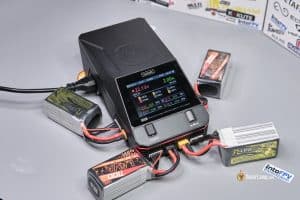







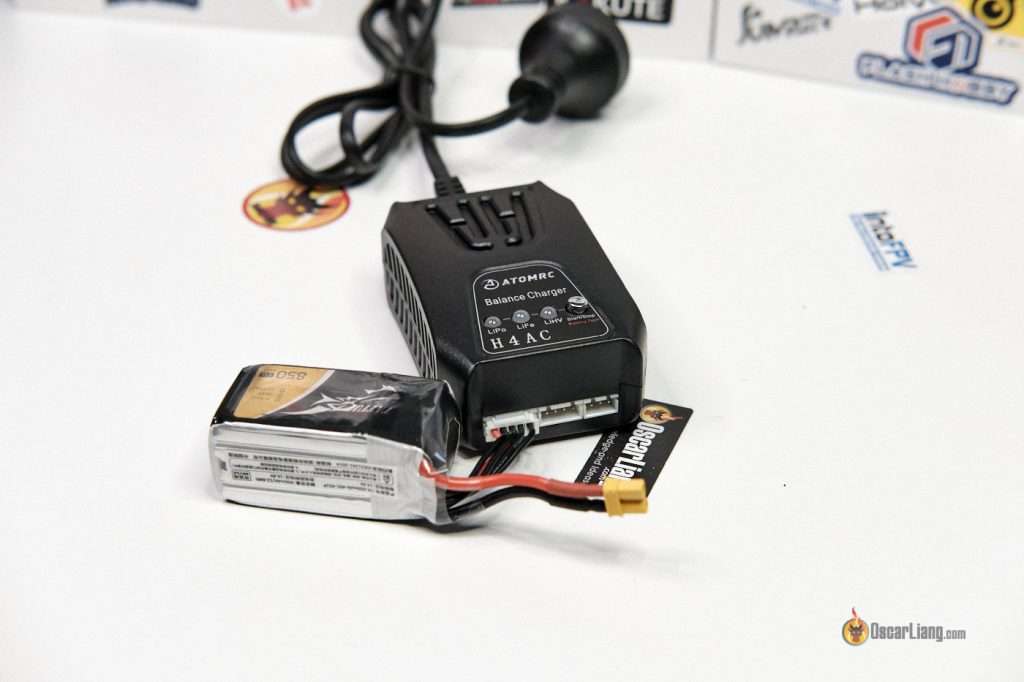



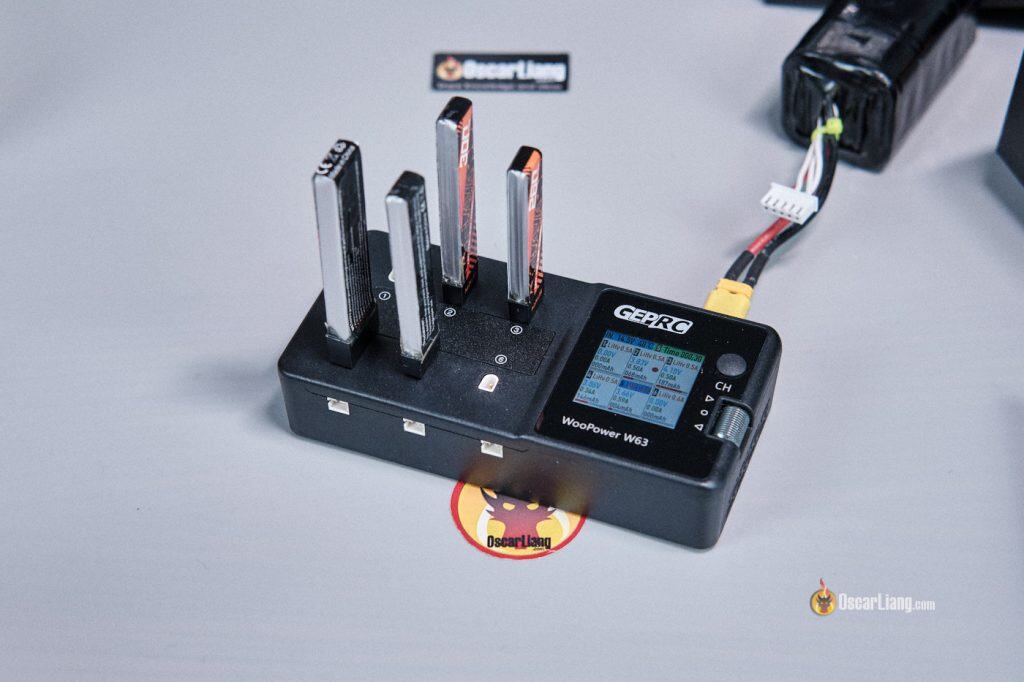


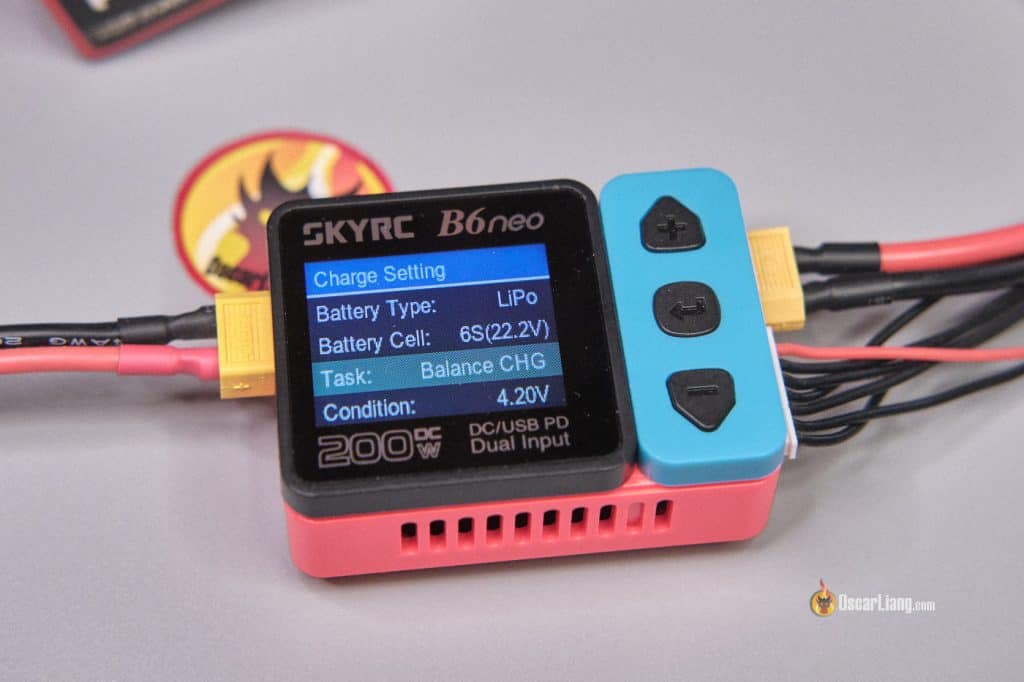



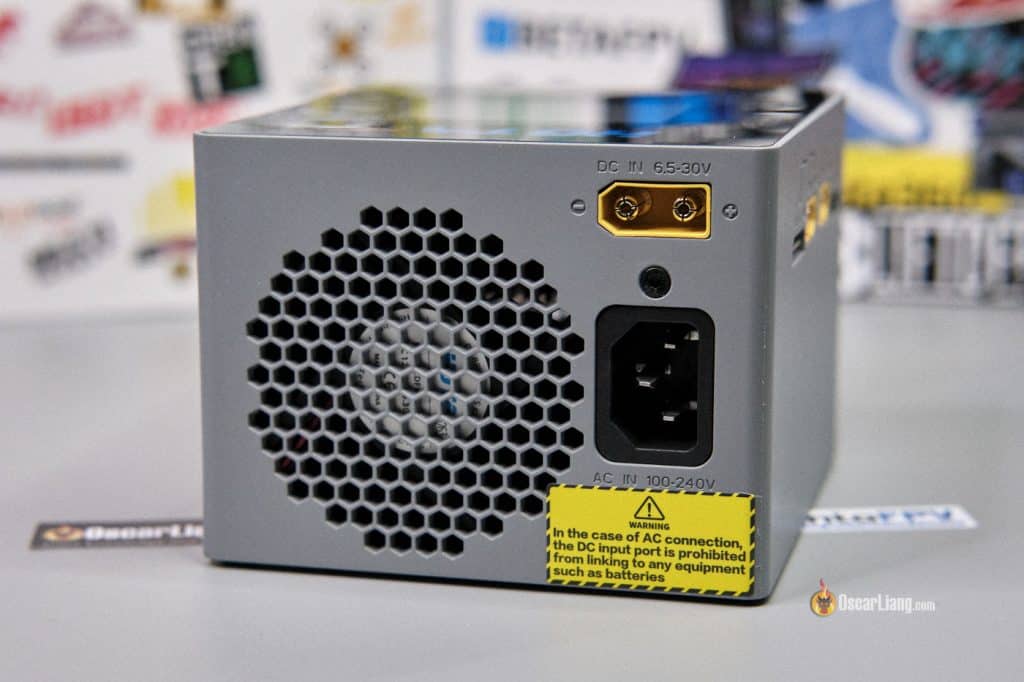
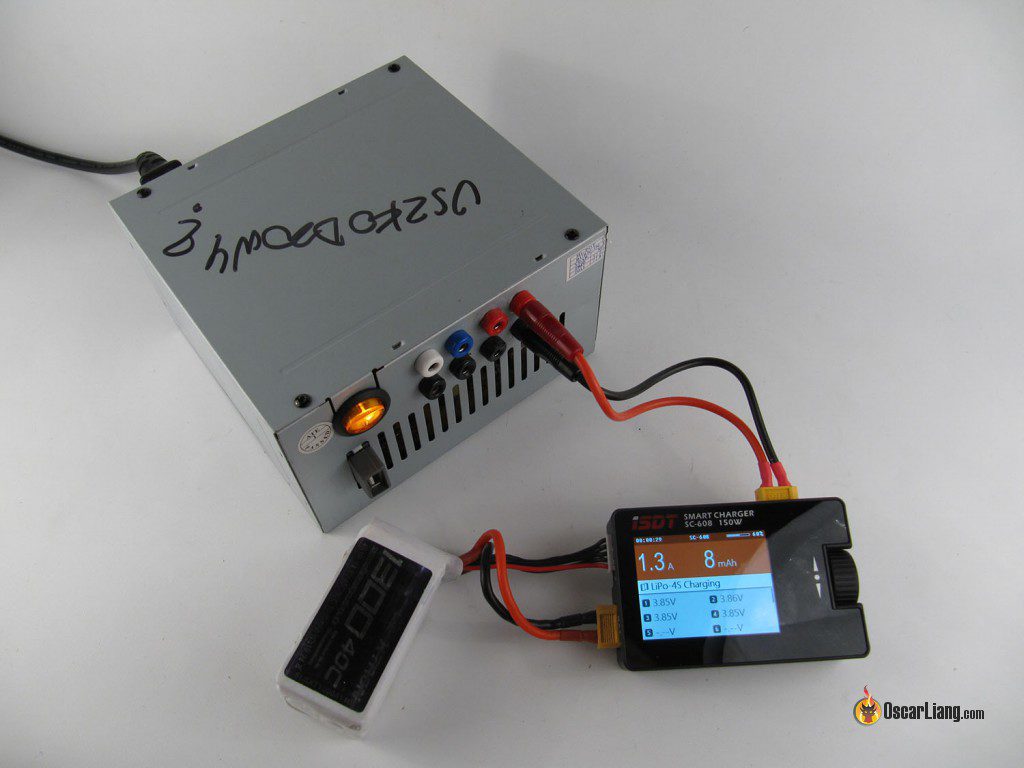

38 comments
Your forgot two good chargers. HTRC T240 and T400, I use both.
Worth the read, thanks for the work!
There is a point you didn’t treat , but from what you have seen during your testing process, would you consider getting two single unit charger? Or one which can charge 2 batteries at the same time?
For example, one Skyrc D200 Neo or two SKyr D100 Neo? Same for GT Power: two units of C6D Pro or one X2 Pro?
Thanks beforehand
I have both :)
Actually, I have a 4-output charger at home (Q6AC – A single charger but allows me to charge 4 individual batteries at the same time), and I have 2 portable chargers that I use in the field, I can charge 2 batteries at the same time and they are very compact.
If you can only have one solution right now, I’d get a powerful charger that has 2 or 4 outputs. In the future if you want to charge in the field, then get 1 or 2 small portable charger would be my advice.
Is there a good charger to use in your car? I’m new to fpv and wondering if it’s worth having a car charger with you, possibly charging a battery while flying around?
Most chargers out there support the voltage a car’s lighter socket can provide (~11-14V), though bare in mind they typically are limited to 120-150W. Just be careful not to drain your car’s battery too much otherwise you might be stranded for awhile.
I wish you would cover the BT2.0 Battery Charger and Voltage Tester V2 too. I wonder whether it’s a smart charger or not.
Thanks
Here are my recommendations on whoop chargers here: https://oscarliang.com/best-tiny-whoop/#Best-Tiny-Whoop-Chargers
What about the HTRC T400 pro ? Thanks
It’s quite an old charger, and frankly the specs/features don’t quite match the modern chargers. For the same price you can get a better/newer one.
The SKYRC B6AC NEO is a variant that also has an AC input. Might be worth to check it out for some people. I personally like it. It is bigger (I believe in height mostly) but still very small, especially for an AC charger.
Thank you for providing such good information for beginners. Let me ask you a few questions while watching.
1. As of April 2024, is the charger you recommend the same?
2. Under the premise of using the drone until it is folded, which charger do you think is the best cost-effective?
3.And do you use two, one for charging at home and the other for charging outside? Is it possible to cover everything with just one?
1. This post was last updated March 2024 (you can find the update date at the beginning of the aritcle).
2. That depends on your requirement, there isn’t a charger that ticks all the boxes. Right now, my go-to charger is the Q6AC.
3. I use a more powerful charger at home, and a couple of smaller ones in the field. But yes it’s possible to use one to cover everything as long as you have a mean to power the charger.
May I ask if there is any lipo charger that has temperature sensor and bloat detection designed for stopping a lipo charge job and making an alarm noise? My old Turnigy accucell 8150 has a temperature sensor that seems to be only for NiMH.
For the LiPo chargers I’ve reviewed so far none of them have temperature sensors that monitors the batteries.
what is the most acceptable balance current rating. the higher the rating the fasting the charge done but also increase the price for higher balance current rating. So what is the minimum balance current rating that consider as acceptable VS price?
so many chargers and just one missing cause the SkyRC B6Neo seems to have quality issues if one youtuber can show 5 of these and 4 with a damage, mostly different failures.
What about the isdt 608 pd, not the previous ac one ?
There are no reviews out about this pd and xt60 dc charger and I am about buying one after I found out about the skyrc issues cause I asked the yter about the current state and the support he had gotten from skyrc. No reply from Sky RC means that I will not buy a product from skyrc again even though my first one from 2007 or 2008 is still working.
Hope you can put more light into this new charger.
That’s the thing about reviewing. You can only speak for the one or two units you tested, and mine has been working flawlessly.
I haven’t tested the iSDT 608 PD, maybe I will when I return home from travelling.
I do have a couple batteries in which the voltage of the first cell is not showing up, and appears as blank. I am about to buy a charger. According to this article, I was wondering if I should look for a charger that offers Trickle Charging, so maybe i can revive them, I am not sure if that is a common feature.
When you describe chargers, please ALWAYS include balance current (eq. supported current between separate battery cells during charging). This parameter is mandatory for learning how fast battery charging with particular charger will finish. Your mentioned HOTA S6 and HOTA D6 Pro (known also as ETHIX D6 PRO) are one of the best hobby chargers also due to 1.6A (1600 mAh) balance current.
Why it matter? I have SkyRC D100 charger with 200 mAh balance current and HOTA D6 Pro with 1600 mAh balance current. Moderately used 6S 1300 mAh battery with D100 charger on 2C charges around 50 minutes with almost 30 minutes spent on balancing. With HOTA D6 Pro charger same finishes below 25 minutes. Larger balance current save your time.
Very good point, I have been pointing out the importance of balance current in chargers in my previous reviews, and that should be included in the buyer’s guide too. Thank you for the comment.
balance charge… “you’ll likely spend most of your charging time using it.”
It would be a great addition if you would include the balance charge amperage of your recommended products.
My q6 takes forever to finish charging and it’s the number 2 characteristic I would look for after power supply.
Thanks for the update.
This grey psu in the photo, has writing black marker in Polish “Uszkodzony?” i.e. in english “damaged?”
it was a recycled PSU. Here’s the post written by a guest writer who’s from Poland: https://oscarliang.com/diy-psu-lipo-charger-workbench/
600w p.s. link is 404.
hi there
I have the toolkit m600 charger .
when I plug 1550man funnily battery in to charge its telling me that the input is too low. please help.
thanks in advance
New 600W PSU is available at Banggood.
thank you, i added a link now.
Found a really cheap one on amazon has good reviews.
amazon.com/SUPERNIGHT-Universal-Regulated-Switching-Transceiver/dp/B01LATMSGS
This is very helpful. Any recommendation on how to prevent any lipo related fire? What is the best way to store the chargers?
Great article! thanks! I would like to ask you about Dell PSU, is it appropriate for Lipo? I have this model hardware.nl/power-supply/dell/210-abvs.html and I want to try it but I’m afraid that i can damage it! Can you advise me something?! thanks !
“Hi Oscar”
I was looking for something like this…I found it quiet interesting, hopefully you will keep posting such blogs….
Hi Oscar, keep up the good work! I’ve watched your site grow over the last couple of years. It’s a great source of info for the hobby.
What I use for a power supply is a server power supply. You can buy one for $20 on Ebay that will give you 80A at 13V! Some will even supply more. They can also be run in series to give 24V. That’s probably overkill for quad batteries though.
They need a modification which basically consists of soldering a jumper, you don’t even need to take the case off. There are guides on RC groups on how to do it.
Trust me, if you have the ability to figure out how to get a quad up and running on your own, you can easily mod the power supply.
IMO, buying one of the expensive power supplies sold specifically for Lipo chargers is a waste unless you don’t have the skill, don’t have the time, or have extra money to waste.
Hi Oscar
Something I rarely see mentioned about why RC chargers generally come without power supply, and which always feel quite obvious to me, remembering my late teen going to the electric RC-cars race field with a buddy of mine: after each race, we plugged the empty battery to the RC charger (the big one, which can do a full charge of your NiMh battery in 15min). No power line there: the only available and practical source of power was one or two full-size car battery he kept in his car trunk. These are heavy but they can give an awful lot of amps in a short time. If you are careful about not discharging it, you can even use your own car battery.
I did not check but I guess all these chargers can run on 12-13V
yes you are right :)
actually that’s how we charge on the field, with car batteries :)
we even tried some huge 3S 10000mah lipo to supply power to the charger and charge smaller lipos :D
Sir,
W have a lithium polymer battery of 32s1p configuration with Vmax 134V.
We have a BMS to monitor the cells voltage and temperature continously.
What can be the maximum charger voltage i can use to charge the above battery pack? Can we use a 180V charger to charge a 134V battery or we have to use a charger of 140V?
Hi, you are asking the wrong person :) I don’t do 32 cell lipo :)
You couldve answered him though
Hello Oscar. Many thaks for your input, im starting this jouney and you and Joshua help a lot.
I have question about hota d6 pro. I understand I do not need Voltage Checker as it has aleady inside? And iSDT 608AC do not have this option to check voltages ? Trying to understand if really need to buy Voltage Checker. And also trying to understand haw dangerous are lipo battery? Its really needed to have ammo box and store it and charge there? I have flat not home and after today research im afraid if this is for me:D